Nagesh Havanur
Endgame
by Frank Brady
402 pages, hardback
Crown Publishers, 2011
http://www.randomhouse.com/crown/
‘In life we are all duffers.’
Belgrade, 30 October 1959
Mikhail Tal has won the Candidates’ Tournament. After the closing ceremony he invites fellow participants to a little party. The old rivalries are forgotten and everyone is in a celebratory mood.
Alexander Koblenz, Tal’s trainer, recalls the occasion:
As I looked at Misha’s happy face, I couldn’t help recalling his father . . . I thought of how happy he would have been had he lived to see this day. And since I was the toastmaster, I proposed a toast to our fathers! It seemed an innocent enough toast, but you should have seen Fischer’s reaction!
His eyes filled with tears, and he immediately let the party. How was I to know then that this gifted youth’s often aggressive behaviour was the result of a deep personal tragedy? Only years later, when reading an interview he had given in the early 70s, did I understand why Fischer had been upset on the occasion and had left.
‘My father left my mother when I was two years old, I have never seen him. My mother only told me that his name was Gerhardt and that he was of German descent. Children who grow up without a parent become wolves.’1
Some wounds never heal. Bobby’s mind was scarred by a sense of being deserted and rejected by his father. But not all children from broken homes become wolves. Both Botvinnik and Spassky shared a similar background but did not develop this kind of personal aggression. Bobby did find childhood father figures in Carmine Nigro and Jack Collins, but the first association was brief and the second turned sour over the years. Brady, however, maintains that Bobby didn’t regard Collins as a father figure.
To return to the interview, it is significant for another reason. Bobby mentions that his father was German but does not say that he was Jewish. He was not obsessed with his own roots then. The world saw two Fischers, one in 1972 and the other in 1992. There is little to suggest that Bobby was a serious anti-Semite before 1972. He became one only later and the Worldwide Church of God had nothing to do with it. He turned to anti-Semitism only after he left the church and began reading anti-Jewish tracts.
Something Brady does not mention is why he fell out with Fischer. After all, he had a long and close friendship with him and his book Bobby Fischer: Profile of a Prodigy resulted from it. Their relationship cooled because Bobby objected to Brady mentioning his Jewish roots.
 One question has always troubled Fischer fans. For him chess was life itself, so how could he have lived without it for so long? This book provides the answer. Chess had ceased to be the ruling passion of his life. What he sought was a hate object and he found it in anti-Semitism. He was a self-hating Jew who desperately wanted to purge himself of his Jewishness and preach the gospel of hate to others. I take issue with Brady’s claim that Fischer’s proselytizing zeal was similar to his mother’s, because she fought for idealistic causes whereas Bobby didn’t.
One question has always troubled Fischer fans. For him chess was life itself, so how could he have lived without it for so long? This book provides the answer. Chess had ceased to be the ruling passion of his life. What he sought was a hate object and he found it in anti-Semitism. He was a self-hating Jew who desperately wanted to purge himself of his Jewishness and preach the gospel of hate to others. I take issue with Brady’s claim that Fischer’s proselytizing zeal was similar to his mother’s, because she fought for idealistic causes whereas Bobby didn’t.
One problem I have with this book is Brady’s descriptions of Bobby’s rivals, which tend to be superficial and stereotyped. He doesn’t seem to understand their motivations. He makes much of Bobby’s feeling disturbed by Tal’s staring antics during play, but although young Misha liked to tease there was never any malice in it. It hurt the sensitive American but Fischer’s resentment of Tal lay in his bad score against him (0-4). The two later became friends.
Similarly Brady suggests that Geller insulted Bobby by offering a draw during the 1970 Interzonal in Palma de Mallorca. Not exactly. It’s true that there was no love lost between them. The burly grandmaster from Odessa exuded confidence, nay, arrogance whenever he played Fischer. Geller had won three consecutive games against him, so Fischer had a score to settle. When they met in round 12 they were joint leaders. When Fischer chose a quiet line with Black, Geller thought a half point would suit the American so offered a truce on move 7(!). Fischer’s first reaction was to laugh. Geller too began to laugh, believing he was doing his opponent a favour. Suddenly Fischer stopped laughing, leaned forward and said, ‘Too early.’ Geller turned puce and soon blundered a pawn.
Although the game lasted 72 moves, the outcome was never in doubt. Geller played like a beaten man. Bobby won the Interzonal with 18½ points out of 23, 3½ points ahead of stalwarts like Larsen, Geller and Taimanov. His only loss was to Larsen who came second.
 Fischer playing Petrosian, watched by Taimanov, Larsen and Portisch
Fischer playing Petrosian, watched by Taimanov, Larsen and Portisch
That brings me to an interesting point. Bobby’s final ascent began with his victory over Petrosian in the Match of the Century. This was followed by his 6-0 wins against Taimanov and Larsen in the Candidates’ Matches 1971 and the victory over Boris Spassky in the 1972 World Championship. He dominated the international scene only during this period (1970–1972) and a large part of his career was marked by withdrawal and absence. Much has been said about his demands of organisers which have been described as selfish, unreasonable and unrealistic. Rightly so in quite a few cases, but an interview in Brady’s book puts them into perspective:
Q: Fischer threw epic tantrums at his 1972 championship match with Boris Spassky — over lighting, chess sets, orange juice, audience noise. Were his antics a ploy?
Brady: I don’t think so. Bobby looked upon chess as a great art. When he played, he was like Vladimir Horowitz at Carnegie Hall. He wanted silence, respect, proper lighting; he didn’t want people with candy wrappers in the audience.
There are factual errors, inadvertent or otherwise.2
Bondarevesky was not Tal’s trainer. Koblenz was. Benko was not a Hungarian freedom fighter. He was essentially apolitical and was needlessly hounded out by the Communist regime from which he sought freedom by moving to the USA. It’s also suggested that Reshevsky was the only US grandmaster in 1954, but what of Reuben Fine and Isaac Kashdan?
Fine was of course a legendary figure who shared first place with Paul Keres in AVRO 1938 International tournament ahead of Botvinnik, Euwe, Alekhine and Capablanca.
Kashdan led the chess renaissance in the USA in 1930s and represented his country in five chess Olympiads winning a record total of nine medals.
There is also an occasional element of hyperbole. When describing the Soviet chess phenomenon he writes that more than seven hundred thousand players registered for one tournament. Really? That’s the population of a whole city!
One little omission is an account of Viswanathan Anand’s meeting with Bobby, a singular encounter he describes in an interview with Der Spiegel:
But the major limitation of the book is that there are no games. It’s like reading the life of Mozart without the music scores. I think at least a few games could have been included. Two famous encounters against the Byrne brothers, if nothing else:3
http://en. wikipedia. org/wiki/The_Game_of_the_Century_
http://www. chessbase. com/cbm/cbm130e/cbm130-6/quiz1. htm
But we shouldn’t be too harsh on the author of a book that is already 400 pages long. Its main virtue is that it fills the gap of those missing years 1972–2008. You do come to know what Bobby felt and did. What is particularly admirable is Brady’s evenhandedness in describing Fischer’s relationships with others, especially the women in his life. At times there is real pathos.
Zita Rajcsanyi met him in Los Angeles in 1992. This was before the infamous Fischer–Spassky Return Match.4 At that time he was practically penniless. When Bobby sheepishly showed her his room she couldn’t believe the way he lived. Barely thirty-five square feet, his living space comprised a small bathroom and a single bed. ‘He was ashamed of his poverty’, she later recalled. Books, boxes and tapes were piled high. The content of the tapes? According to Zita, they contained Bobby’s conspiracy theories. He told her he was planning to write a book proving how the Soviet players cheated at chess and that he’d recorded his thoughts on the matter.
In the end his efforts to woo the much younger Zita failed. Bobby fared better with Marilyn Young, a young Filipina woman. He is said to have sired her child, Jinky, but Brady has his doubts. Although an Icelandic court dismissed the paternity claim, we may not have heard the last of this story.
 Last but not least is Miyoko Watai, a Japanese chess fan whom Bobby met in 1970s. Decades later she was to play a major role in his release from incarceration in Tokyo. She was devoted to him, married him and has been formally confirmed his widow. So why did she not accompany Fischer to Iceland and live with him? Her personal and professional commitments seem to have got in the way. Nevertheless, she and Bobby were in constant touch by e-mail and telephone. She came to Reykjavik as much as her job working for a pharmaceutical company and editing a chess journal allowed. There was always hope that some day they would settle down together.
Last but not least is Miyoko Watai, a Japanese chess fan whom Bobby met in 1970s. Decades later she was to play a major role in his release from incarceration in Tokyo. She was devoted to him, married him and has been formally confirmed his widow. So why did she not accompany Fischer to Iceland and live with him? Her personal and professional commitments seem to have got in the way. Nevertheless, she and Bobby were in constant touch by e-mail and telephone. She came to Reykjavik as much as her job working for a pharmaceutical company and editing a chess journal allowed. There was always hope that some day they would settle down together.
Each of these relationships left a positive mark on Bobby and soothed his restless spirit. The last period of his life spent in Iceland was his most contented. This little land offered him peace and rest. I was particularly enchanted by his visits to the bookstore and long walks in the countryside. He would have lived peacefully but his turbulent life had already taken its toll on his health and he could not be saved. He was moved by what his devoted friends did for him and those last words still linger in the memory.
‘Nothing soothes more than the human touch.’
Rest in peace.5
;
Notes
- Brady does not mention this incident in his book but in a way it’s the key to the inner life of Bobby.
- Historian Edward Winter writes that there are many factual errors in the book and denies his association with this work:
‘The book Endgame by Frank Brady (New York, 2011) thanks us for assistance but should not. On 1 December 2010, the day after receiving an “uncorrected proof’”of the book from Dr Brady, we spontaneously sent him a list (several pages long) of errors noted during our quick skim of the work. He at once forwarded our list to the publisher, but it proved too late for the corrections to be incorporated. However, the publisher did mistakenly add the acknowledgement to us which Dr. Brady had also submitted.’
(Chess Notes No. 6929)
- The game against Donald Byrne (1956) was rather extravagantly called The Game of the Century even if it was a remarkable effort for an 13-year-old. It’s the other game with Robert Byrne (1964) that takes one’s breath away.
- The 1992 Fischer–Spassky Return match has faded from public memory. Garry Kasparov scathingly dubbed it ‘the battle of dinosaurs’.
- Links to other reviews:
http://www. chessville. com/reviews/Curacao1962. htm
http://www. chessville. com/reviews/WorldChampionFischer. htm
http://www. chessville. com/reviews/FischerWorldChampion. htm
;

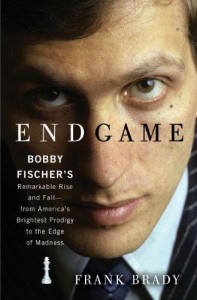
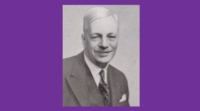
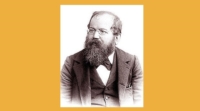
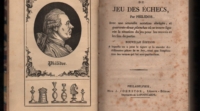

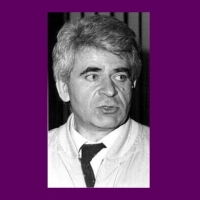
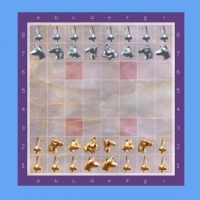
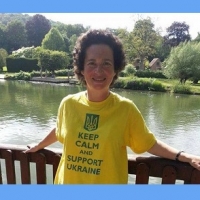
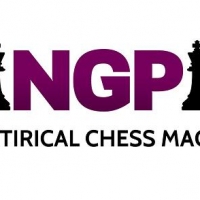
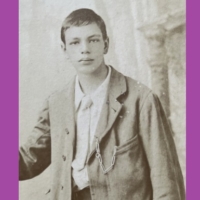
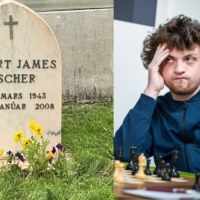
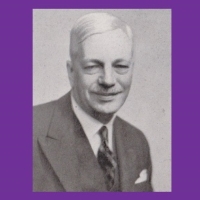
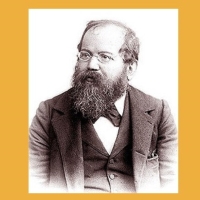
Why is there are picture of Hillary Clinton on here?
Dear friend,
I don’t see Ms Clinton in this review.
What is the connection?
That picture that you posted is Hillary Clinton, NOT Zita Rajcsanyi.